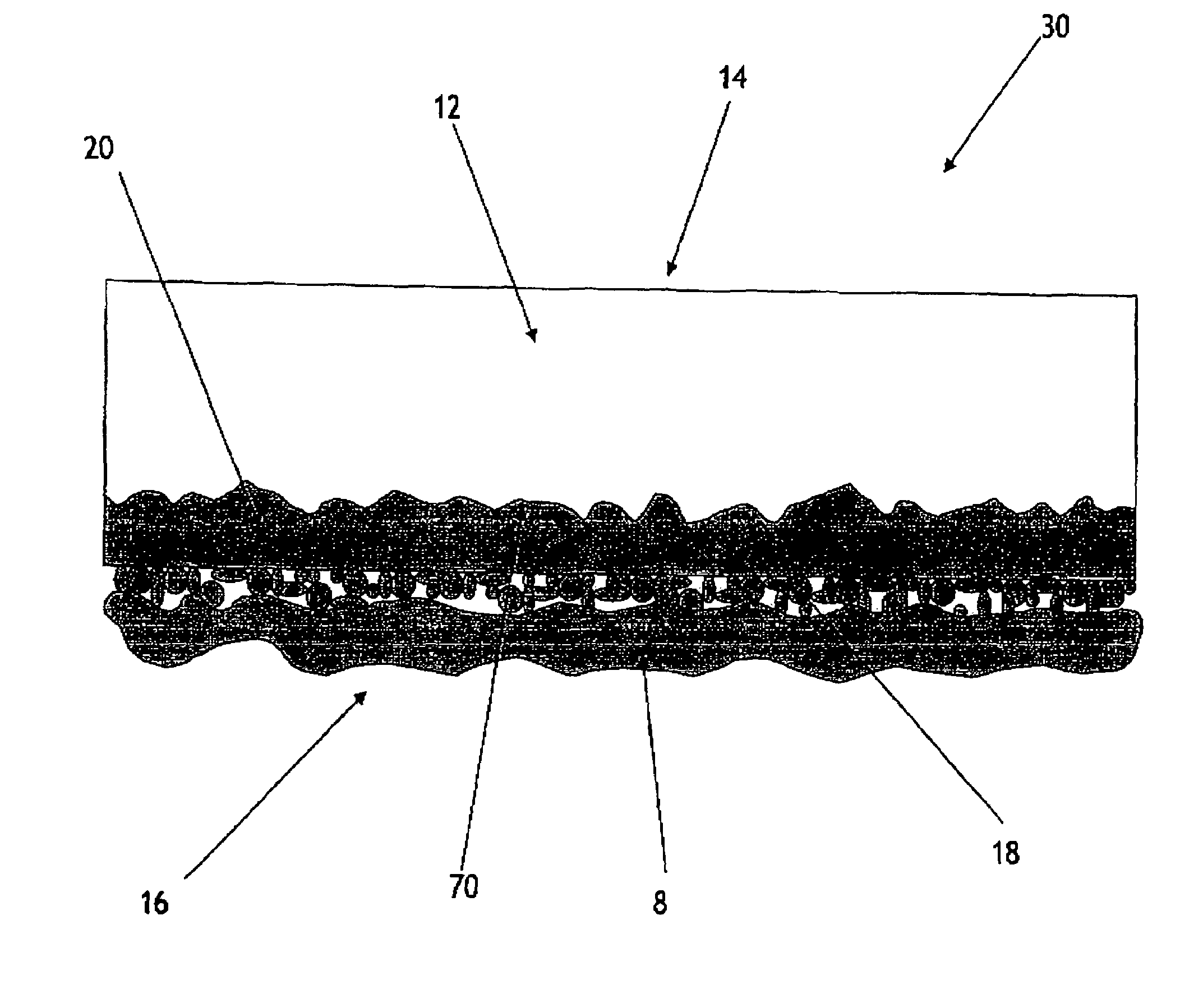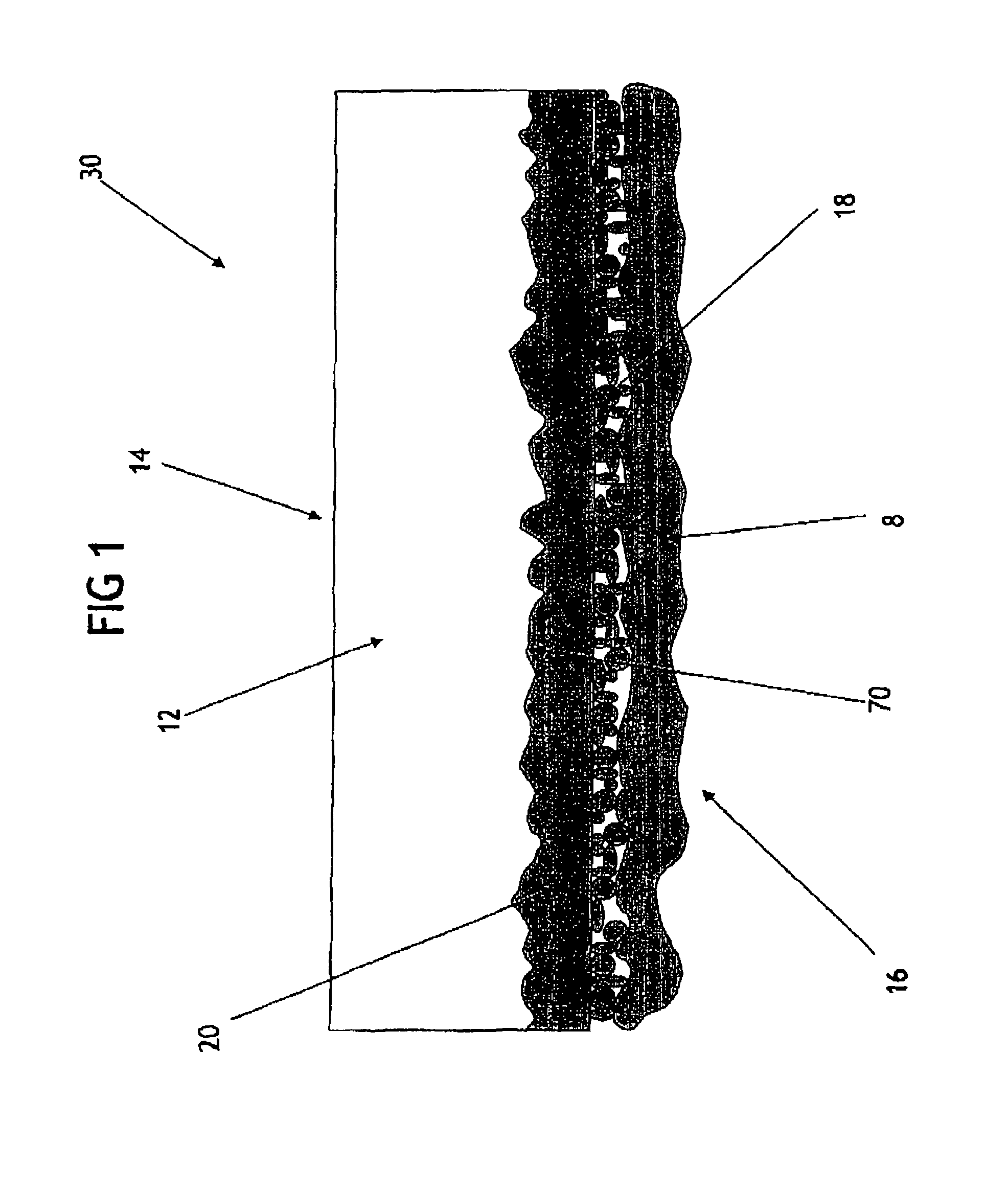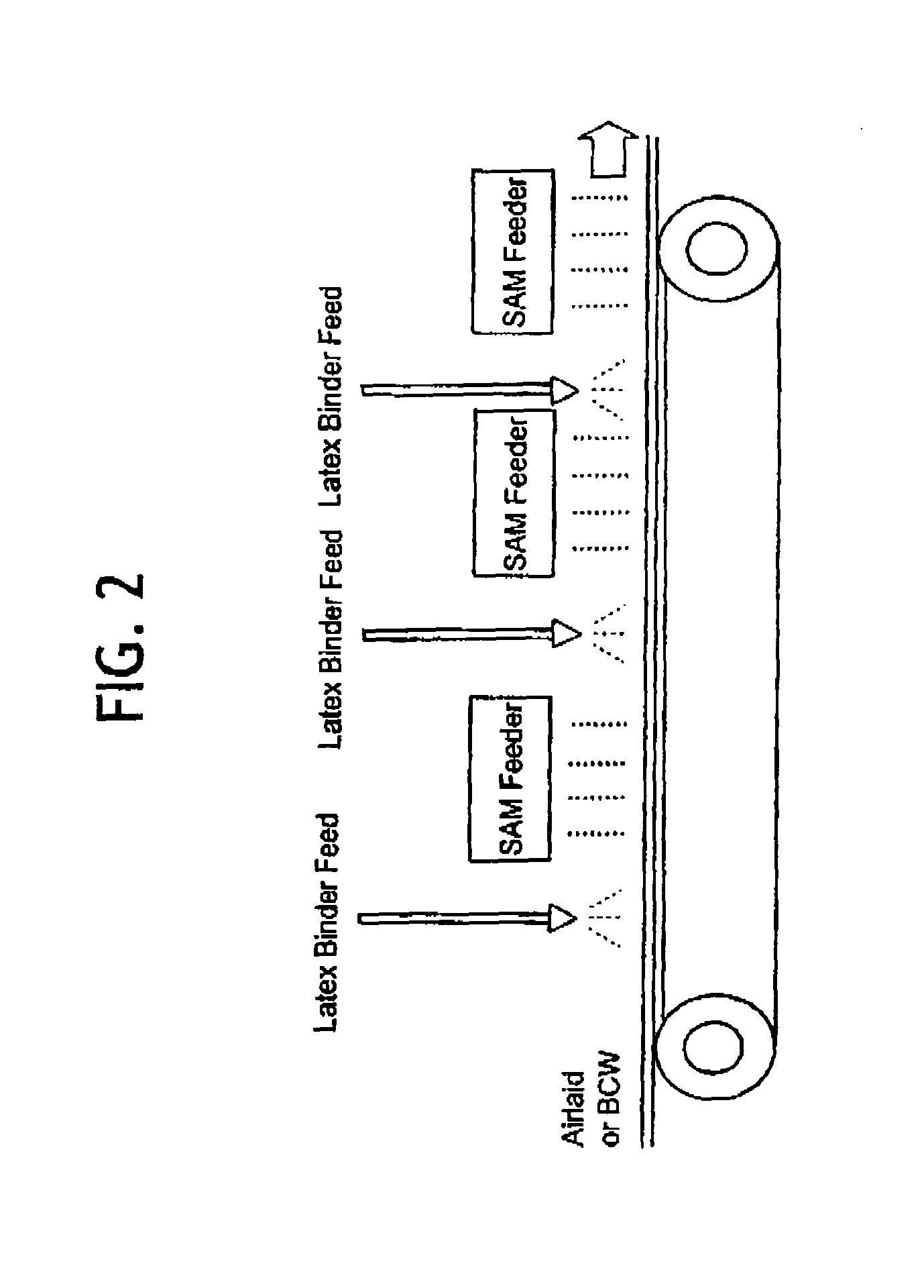Unitary absorbent core with binding agents
a unitary absorbent core and binding agent technology, applied in the field of absorbent articles, can solve the problems of difficult to absorb viscous fluid into such absorbent products, difficult to absorb and distribute within the products, and compromise in overall performance, so as to achieve greater absorbent capacity, reduce the effect of weight and size, and improve the effect of absorption
- Summary
- Abstract
- Description
- Claims
- Application Information
AI Technical Summary
Benefits of technology
Problems solved by technology
Method used
Image
Examples
examples
[0092]The unitary absorbent core 30 of the present invention exhibits similar or improved intake properties, rewet performance, saturation and retention capacity, horizontal wicking, and desorption when compared to the two-layer core (previously described), as demonstrated by the following Examples and Tables.
[0093]Several examples of the invention were prepared. The general method of preparation of the invention samples was consistent for all examples. The nonwoven layer used for the samples was an airlaid consisting of 90-percent NF 405 available from Weyerhaeuser Company, a business having offices located in Federal Way, Wash., U.S.A. and 10-percent bicomponent binder fiber T-255 available from KoSa, a business having offices located in Houston, Tex., U.S.A. Each nonwoven sample had a density of about 0.06 g / cc and a basis weight of either about 175 gsm or about 200 gsm, according to the tables below.
[0094]The samples were cut to dimensions of 13.25 inches by 2.25 inches for the ...
PUM
| Property | Measurement | Unit |
|---|---|---|
| density | aaaaa | aaaaa |
| wicking distance | aaaaa | aaaaa |
| contact angle | aaaaa | aaaaa |
Abstract
Description
Claims
Application Information
 Login to View More
Login to View More - R&D
- Intellectual Property
- Life Sciences
- Materials
- Tech Scout
- Unparalleled Data Quality
- Higher Quality Content
- 60% Fewer Hallucinations
Browse by: Latest US Patents, China's latest patents, Technical Efficacy Thesaurus, Application Domain, Technology Topic, Popular Technical Reports.
© 2025 PatSnap. All rights reserved.Legal|Privacy policy|Modern Slavery Act Transparency Statement|Sitemap|About US| Contact US: help@patsnap.com



